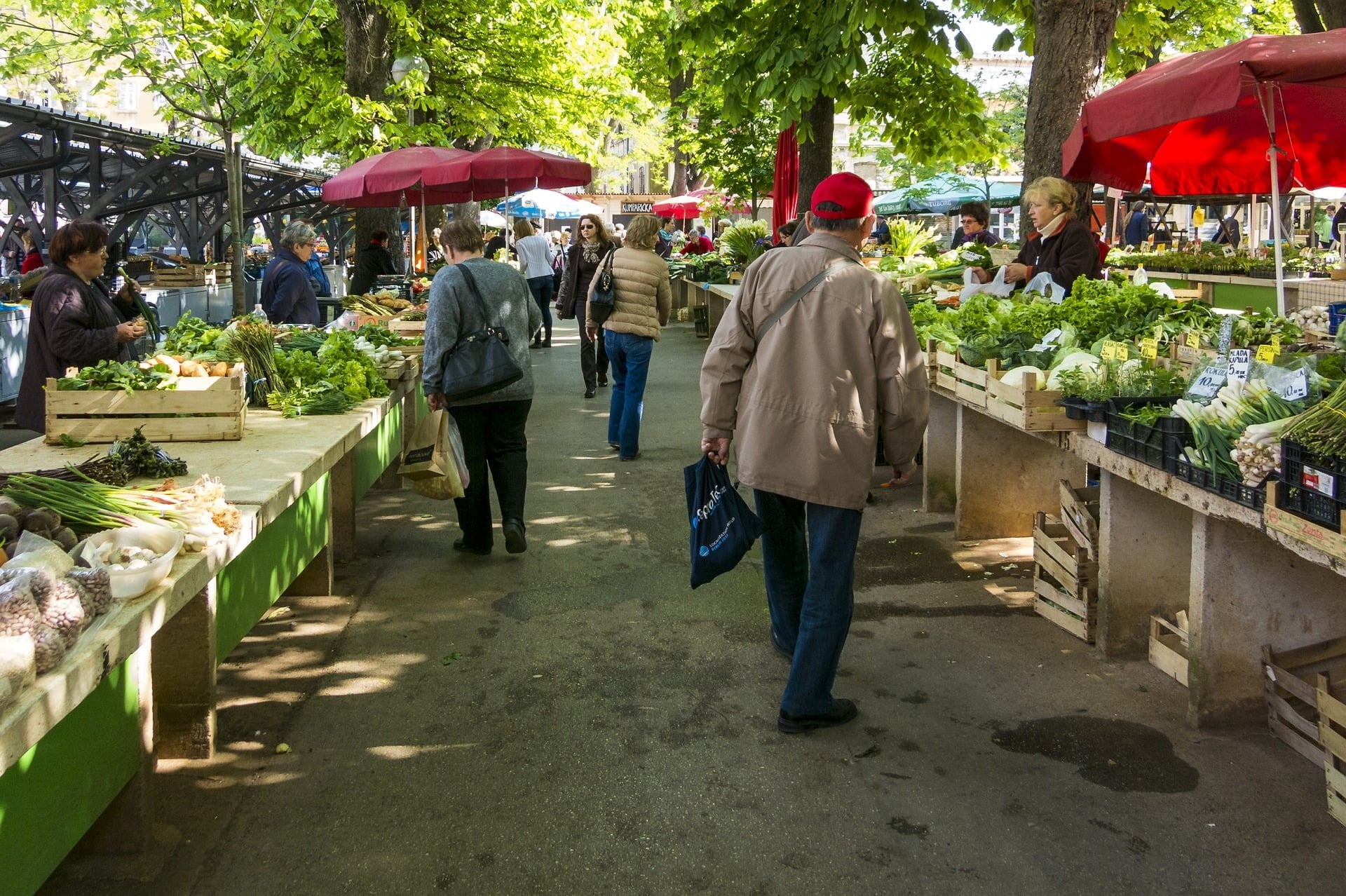How to Upgrade Your Produce Business Beyond the Farmer’s Market
by Arina Smith Business Planning & Opportunities Published on: 06 September 2018 Last Updated on: 10 September 2018

More than 8,600 farmers markets are registered in the USDA Farmers Markets Directory.
Farmers markets give artisans and farmers a chance to sell their wares locally. Usually, farmers markets are informal, community-oriented affairs.
You may already be selling fruits and vegetables at your local farmer’s market. But perhaps you’re longing to turn your little farm stand into a full-fledged business.
It is possible to upgrade your produce business beyond the farmer’s market. In this post, we’ll discuss how!
1. Identify Your Market :
The key to growing any business lies in the owner’s capacity to cater to a specific market. Right now, your market is likely rather broad–you sell fruits and veggies to anybody who passes by your produce stand at a farmers market.
Yet thinking about who you’d like to cater to with your produce business can help you with advertising efforts and growth planning down the road.
For example, your market right now may be community members looking for fresh produce.
Narrowing this market down to young, health-conscious families in your community puts a different spin on things.
You can have several target markets in mind–that’s okay! Take a moment to brainstorm who you want to reach and who is likely to be the most receptive to your ideas.
Once you identify your market, get to know them. Have conversations with this clientele at the next farmer’s market. Call your friends or relatives who fit the specific demographic you wish to cater to. Learning more about your market’s budget, needs, and desires can help you meet these needs effectively.
2. Continue to Network
Every business depends on a solid network. Word of mouth is one of the best ways to advertise your produce business and watch it grow! (Pun intended.)
As you continue to sell produce at local markets, network as much as possible. This may mean printing out a stack of business cards and sliding these into every bag of products you sell.
Hand out business cards to other farmers and artisans, too. You never know where these will take you.
Ask for business cards or contact information in return. Establishing yourself as a community presence gives you the sure footing you need to take your produce business to the next level.
In fact, these connections may eventually turn into local partnerships. You may wish to partner with local grocery stores, for example, who may want to sell your vegetables and fruits in their produce sections. Restaurants and cafes may be interested in using your product in local dishes.
3. Be Active on Social Media :
Social media is a powerful channel for many entrepreneurs and small business owners.
Platforms like Instagram can be especially instrumental in displaying goods and wares to a large audience.
Consider setting up business profiles on social media platforms such as Instagram and Facebook. Stay active on these accounts, posting regular images of your product. Images are important, as many social media users are drawn to media content.
Social media can also give you a means of advertising discounts, promotions, and events. It can even act as a funnel to a professional website, which we discuss in the next step.
4. Build a Website :
Websites are like digital business cards. They give visitors a valuable glimpse into what you have to offer, no matter what industry you are a part of.
As a produce business owner, your website can share information about your farming techniques, the products you offer, and the regions you serve. In fact, a simple yet professional website can boost your authority in potential customers’ eyes, indicating that you’re committed to your craft.
It’s possible to build a website on your own or hire out web design services. Of course, we recommend identifying your target market and clientele before you craft your website!
For a good example of a professional website, visit this company here.
5. Hold Produce Sales At Your Farm :
Farmers markets shouldn’t be the only place that you sell your product. Once you start to build a community, start holding off-site sales at other locations. This may mean other farmers markets, but it can also mean at your farm itself.
Set aside a weekend window, such as Sunday afternoons from 3 PM to 6 PM, for selling produce on-site. Advertise this sale via signs, if you wish, or at your farmers market! (Why not slide a promotional card into produce bags you sell, along with your business card, for example?)
Some farmers successfully set up produce stands along the side of prominent roads. Check with your county or city regulations to make sure this is permitted before doing so.
6. Provide Incentives :
Some customers may naturally follow as your produce business grows. Others, however, may be harder to bring along. For this reason, valuable incentives can be key to getting more customers on board.
Offer discounts, promotions, and incentives to customers who make specific commitments to your business. Take $5 off of a three bag order, for example, or give a permanent discount card to community members who commit to making one purchase a month from your produce business.
You can also use cards, brochures, and pamphlets to advertise these incentives at your farmers market stand.
7. Upgrade Your Tech :
Most people pay for farmers markets goods in cash. Step up the game by accepting credit cards or digital transactions.
Upgrading your POS system can set you apart from other produce stands and make it easier for all customers to pay for the product you sell. Even a simple touchscreen order form can go a long way in making a good impression on clients.
Final Thoughts: Growing Your Produce Business :
It is possible to take your luscious fruits and veggies to a whole new level, and we’re not just talking farming techniques. You can turn your produce stand into a produce business by taking your time and catering to a specific market.
Social media can also be helpful, particularly if you have a solid website in place. Continue to network with other community members and artisans, including local restaurants and grocery stores, to grow your business.
Lastly, customer incentives and cutting-edge technology can contribute to a flourishing produce business.
At Real Wealth Business, you can find actionable strategies for taking your business far. Learn more about entrepreneurship here!
Read Also :







































































































